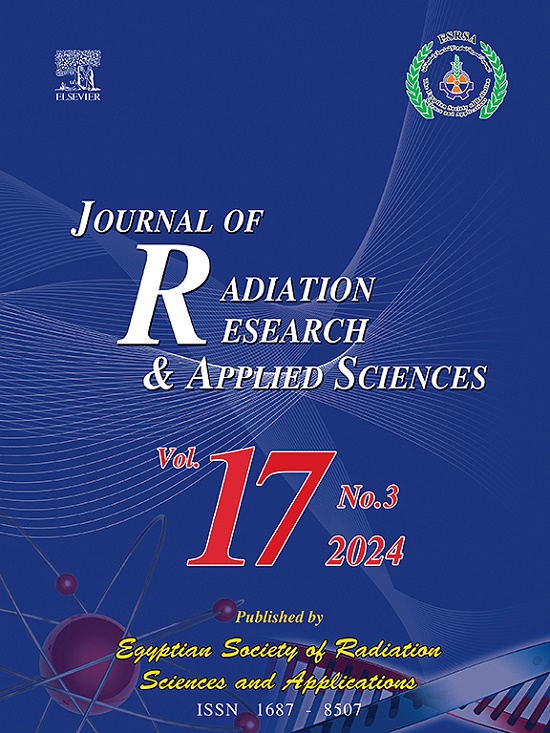Applications of magnetic induction for jeffrey nanofluid subject to suspension of microorganisms with nonlinear radiative effects and Cattaneo-Christov approach
IF 1.7
4区 综合性期刊
Q2 MULTIDISCIPLINARY SCIENCES
Journal of Radiation Research and Applied Sciences
Pub Date : 2025-03-16
DOI:10.1016/j.jrras.2025.101412
引用次数: 0
Abstract
The induction of induced magnetic force to flow of nanofluid presents crucial applications in the magnetically controlled cooling process, nuclear systems, thermal processes and improving the heat dissipation in microelectronic and industrial systems. Owing to such motivated applications, the objective of current analysis is to investigated the significance of induced magnetic force for bioconvective stagnation point flow of Jeffrey nanofluid due to stretched surface with porous medium. The nonlinear radiative effects and convective thermal constraints are considered to evaluates the heat transfer impact. The prediction for mass and heat transfer is subject to implementation of advance Fourier approach. Numerical computations are performed with help of shooting technique. It has been noticed that the utilization of induced magnetic force affects the mass and heat transfer phenomenon. The effects of magnetic parameter on heat and mass transfer phenomenon has been examined. The simulated findings offer potential applications in the magnetically controlled systems, heat exchangers, fusion processes and microfluidic heat exchangers.
具有非线性辐射效应的微生物悬浮液磁感应特性及Cattaneo-Christov方法的应用
感应磁力对纳米流体流动的影响在磁控冷却过程、核系统、热过程以及改善微电子和工业系统的散热方面具有重要的应用。由于这些有动机的应用,当前分析的目的是研究感应磁力对杰弗里纳米流体由于多孔介质表面拉伸而产生的生物对流驻点流动的意义。考虑了非线性辐射效应和对流热约束对换热影响的影响。质量和传热的预测需要采用先进的傅里叶方法。利用射击技术进行了数值计算。已经注意到感应磁力的利用影响了传质和传热现象。考察了磁参数对传热传质现象的影响。模拟结果在磁控系统、热交换器、聚变过程和微流控热交换器中具有潜在的应用前景。
本文章由计算机程序翻译,如有差异,请以英文原文为准。
求助全文
约1分钟内获得全文
求助全文
来源期刊

Journal of Radiation Research and Applied Sciences
MULTIDISCIPLINARY SCIENCES-
自引率
5.90%
发文量
130
审稿时长
16 weeks
期刊介绍:
Journal of Radiation Research and Applied Sciences provides a high quality medium for the publication of substantial, original and scientific and technological papers on the development and applications of nuclear, radiation and isotopes in biology, medicine, drugs, biochemistry, microbiology, agriculture, entomology, food technology, chemistry, physics, solid states, engineering, environmental and applied sciences.
 求助内容:
求助内容: 应助结果提醒方式:
应助结果提醒方式:


